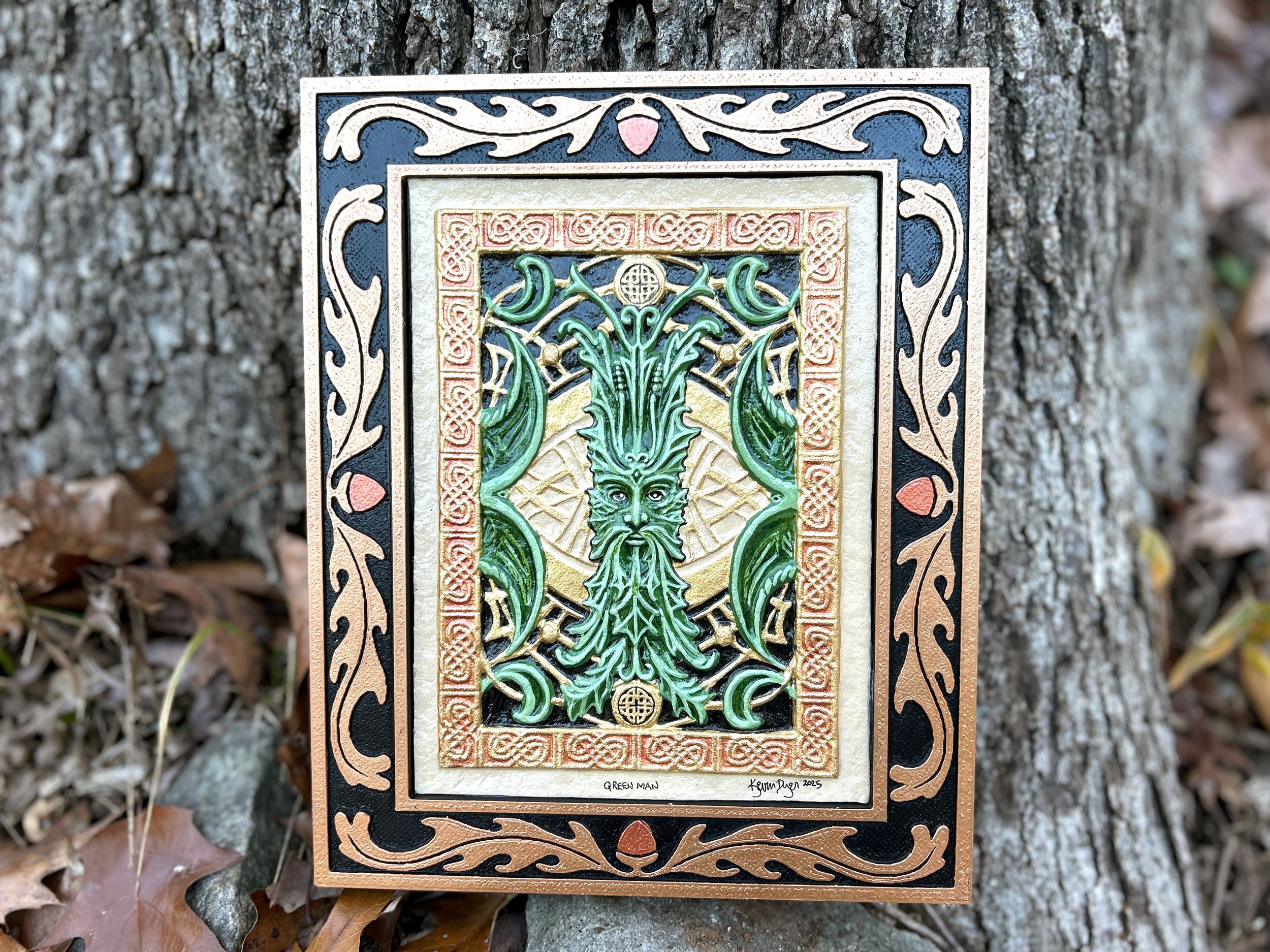🌿 The Green Man: Guardian of Nature in Celtic, Scottish, and Norse Mythology
The Green Man is a symbol deeply rooted in European cultures, particularly in Celtic, Scottish, and Norse traditions. Often depicted as a face surrounded by leaves, vines, and branches, the Green Man represents the spirit of nature and the cycles of life, death, and rebirth. Let’s explore his origins and significance in these ancient mythologies.
🌱 Origins and Symbolism
Celtic and Irish Roots: In Celtic and Irish mythology, the Green Man symbolizes the rejuvenation of nature each spring. He is often associated with the Oak King, who rules the waxing year, bringing life and growth to the land.
Scottish and Viking Connections: While not directly referenced in Viking lore, the Green Man's essence aligns with Yggdrasil, the World Tree of Norse mythology. Yggdrasil connects all nine realms and symbolizes the balance and interconnectedness of all life. In Scottish traditions, the Green Man is also seen as a spirit of nature, embodying the strength and endurance of the natural world.
Universal Meaning: Across Celtic, Scottish, and Viking cultures, the Green Man represents vitality, renewal, and the deep connection between humans and nature. His image transcends borders, reminding us of our relationship with the earth and its cycles.
🌳 The Green Man in Art and Culture
Medieval and Celtic Architecture: Green Man carvings can be found in medieval churches across Ireland, Scotland, and beyond, often adorning walls, ceilings, and doorways. These carvings were meant to remind people of nature’s omnipresence, even in sacred spaces.
Modern Interpretations: Today, the Green Man remains a popular figure in art and design, particularly in pieces inspired by Celtic, Scottish, and Viking cultures. His image continues to inspire artists and nature enthusiasts, symbolizing a deep connection to the earth.





